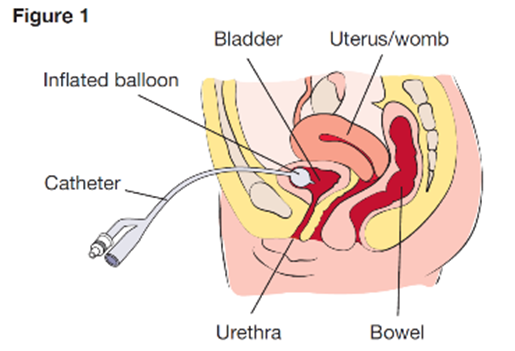A child with peripheral edema who weighs 44 pounds receives a prescription for furosemide 2 mg/kg intravenously every 12 hours. The medication is available at 10 mg/mL. How many mL should the nurse administer? (Enter numeric value only)
The Correct Answer is ["4"]
Step 1 is to convert the child’s weight from pounds to kilograms.
44 pounds ÷ 2.2 = 20 kilograms.
Result at each step = 20 kilograms.
Step 2 is to calculate the total dosage of furosemide in milligrams.
2 mg × 20 kg = 40 mg.
Result at each step = 40 mg.
Step 3 is to determine the volume of medication to administer in milliliters.
40 mg ÷ 10 mg/mL = 4 mL.
Result at each step = 4 mL.
The nurse should administer 4 mL.
Nursing Test Bank
Naxlex Comprehensive Predictor Exams
Related Questions
Correct Answer is C
Explanation
Choice A: Monitoring indwelling urinary catheter and measure strict intake and output is not an action that the nurse should immediately take, as this is not relevant or urgent for a client who may have had a stroke. This is a distractor choice.
Choice B: Keeping the bed in the lowest position and initiating seizure and fall precautions is not an action that the nurse should immediately take, as this is a preventive measure that does not address the acute problem of impaired cerebral perfusion. This is another distractor choice.
Choice C: Starting two large bore IV catheters and reviewing inclusion criteria for IV fibrinolytic therapy is an action that the nurse should immediately take, as this can prepare the client for potential administration of tissue plasminogen activator (tPA., which can dissolve blood clots and restore blood flow to the brain if given within 4.5 hours of stroke onset. Therefore, this is the correct choice.
Choice D: Maintaining elevated positioning of the dependent joints on affected side is not an action that the nurse should immediately take, as this can worsen edema and impair circulation in the affected limbs. The recommended position is to keep them at or below heart level. This is another distractor choice.
Correct Answer is A
Explanation
Choice A: Observing the insertion site of the suprapubic catheter is an essential assessment for the home health nurse, as this can help detect any signs of infection, inflammation, or leakage. Therefore, this is the correct choice.
Choice B: Palpating the flank area is not a necessary assessment for the home health nurse, as this is not related to the suprapubic catheter. This is a distractor choice.
Choice C: Measuring abdominal girth is not a relevant assessment for the home health nurse, as this is not affected by the suprapubic catheter. This is another distractor choice.
Choice D: Assessing the perineal area is not an important assessment for the home health nurse, as this is not involved in the suprapubic catheter. This is another distractor choice.

Whether you are a student looking to ace your exams or a practicing nurse seeking to enhance your expertise , our nursing education contents will empower you with the confidence and competence to make a difference in the lives of patients and become a respected leader in the healthcare field.
Visit Naxlex, invest in your future and unlock endless possibilities with our unparalleled nursing education contents today
Report Wrong Answer on the Current Question
Do you disagree with the answer? If yes, what is your expected answer? Explain.
Kindly be descriptive with the issue you are facing.
